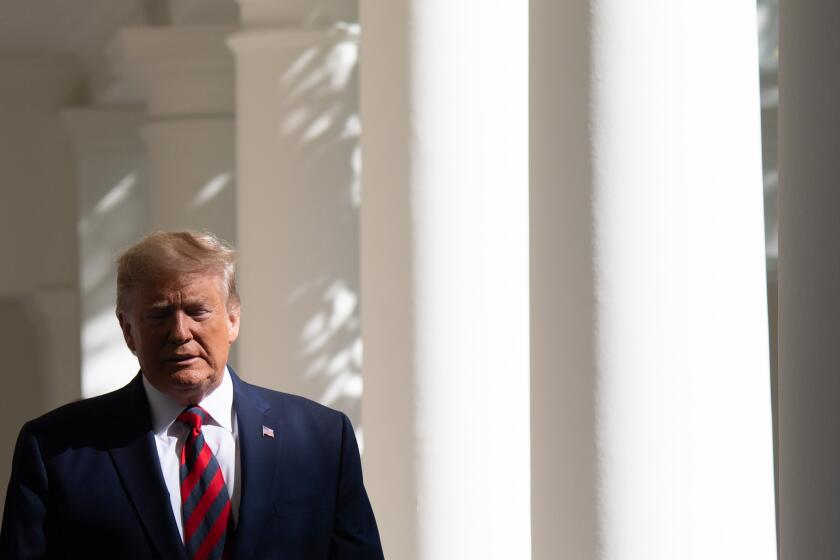Why White House account of Trump’s Ukraine call is not a word-for-word transcript

- Share via
WASHINGTON — The five pages released by the White House documenting President Trump’s phone conversation with Ukrainian President Volodymyr Zelensky are not a word-for-word transcript of the call.
A “CAUTION” note included at the bottom of the first page of the text released Wednesday explains that the memorandum “records the notes and recollections of Situation Room Duty Officers and NSC policy staff assigned to listen and memorialize the conversation in written form as the conversation takes place.”
The account was prepared using voice recognition software, along with note takers and experts listening in, according to senior White House officials. The officials spoke on condition of anonymity because they were not authorized to publicly discuss White House document preparation.
It’s breathtaking how quickly Trump & Co. went to their dirty tricks playbook: The story here isn’t that Trump tried to extort a foreign government to gin up dirt on a political opponent; it’s that Joe Biden engaged in (unspecified, unproven) corrupt dealings with Ukraine.
The Situation Room is a secure meeting space in the basement of the White House West Wing where the president and members of the National Security Council, or NSC, discuss sensitive foreign and domestic policy issues. It is staffed 24 hours a day.
The “caution” note goes on to explain that several factors can affect the accuracy of the recording. It cites poor telecommunication connections and “variations in accent and/or interpretation” among them. Zelensky spoke through a translator.
The word “inaudible” is used to indicate portions of a conversation the notetaker was unable to hear.
The president himself said the move could help his electoral chances, but he reacted with a cascade of angry tweets that accused Democrats of “a witch hunt” and “presidential harassment.”
During the call, Trump was upstairs in the White House residence while downstairs, in the Situation Room, officials listened in to memorialize the conversation, as is standard practice.
The call lasted 30 minutes.
The resulting memorandum was classified as “Secret’ and “ORCON, for “originator controlled,” to prevent its spread throughout the federal government.
The House of Representatives intends to vote to impeach President Trump for abusing his office and obstructing Congress, a condemnation that only two other U.S. presidents have faced in the nation’s 243-year history. Despite the historic nature of the vote on charging the president with committing high crimes and misdemeanors, Trump’s fate has been sealed for days, if not weeks in the Democratic-controlled House.
More to Read
Get the L.A. Times Politics newsletter
Deeply reported insights into legislation, politics and policy from Sacramento, Washington and beyond. In your inbox twice per week.
You may occasionally receive promotional content from the Los Angeles Times.













